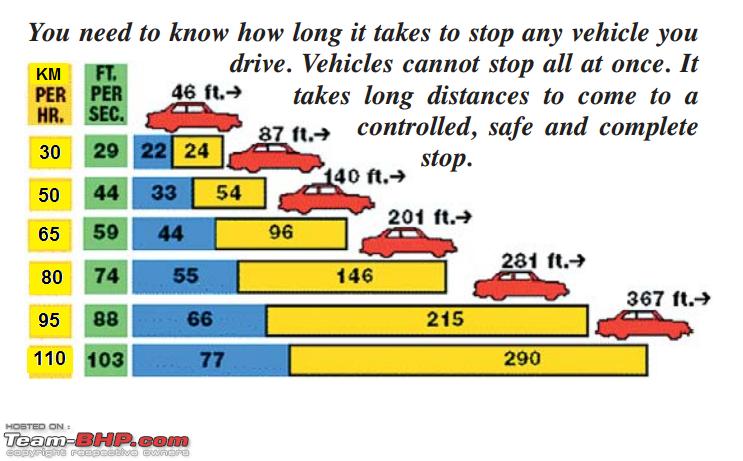Mary Lou Jay
If you want to have a safe stopping distance, you must: Next time you’re out driving, count to three. It’s not a technique for controlling your temper, although that’s also a good thing to do when you’re behind the wheel. Counting to three can help you maintain a safe following distance between your vehicle and the one ahead, giving you time to brake safely if you have to stop suddenly.
Here’s how the three-second rule works, according to Edmunds.com: When the vehicle ahead of you passes a street light, a road sign or some other landmark, start counting. It should take your vehicle at least three seconds to reach that landmark. If it takes less time, you’re following too closely and you should back off. If you’re driving in bad weather or at night, you should allow even more distance between you and the vehicle ahead.
Some drivers think that quick reflexes will help them avoid collisions caused by following too closely. But they usually underestimate the time it takes to perceive a problem and react. Drive and Stay Alive (DSA), a nonprofit group that collects and shares information about safe driving, says that most drivers take between two-thirds of a second and a second to apply the brakes. Inexperienced or distracted drivers may need even more time. How far drivers travel during that reaction time depends on the speed of the car. The faster a vehicle is moving, the more distance it will cover as it’s coming to a stop.
The DSA gives these examples. At 20 miles per hour, a driver will travel 20 feet during the reaction time, then need another 20 feet for the car to come to a stop, for a total stopping distance of 40 feet. Increase the speed to 40 mph, and you get 40 feet of travel during the reaction time, but 80 feet during braking time, for a total of 120 feet. Increase your speed to 60 mph, however, and you’ll double the distance you’re traveling: 60 feet for reaction time, but 180 feet for braking time, for a total of 240 feet.
In addition to the speed of the car, driver reaction time plays a major role. Drivers traveling at 60 mph who take just half a second to react will be able to stop their cars 88 feet sooner than drivers who take a second and a half to react, according to the National Highway Traffic Safety Administration (NHTSA). That’s why it’s so important to pay attention to the road when you’re driving.
Antilock braking systems (ABS) and properly inflated tires with good treads can give drivers a better chance to brake quickly, according to NHTSA. But even the best equipment and the fastest reaction times can’t overcome the laws of physics — it simply takes a certain amount of space to stop safely. So get in the habit of counting to three to give yourself plenty of time to brake — and avoid auto insurance claims.
